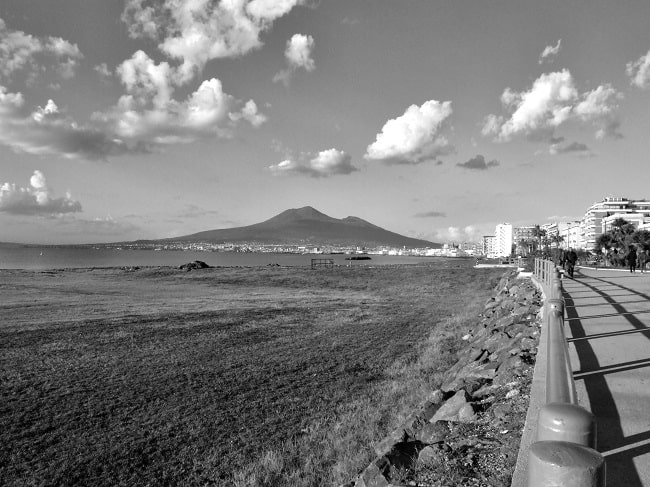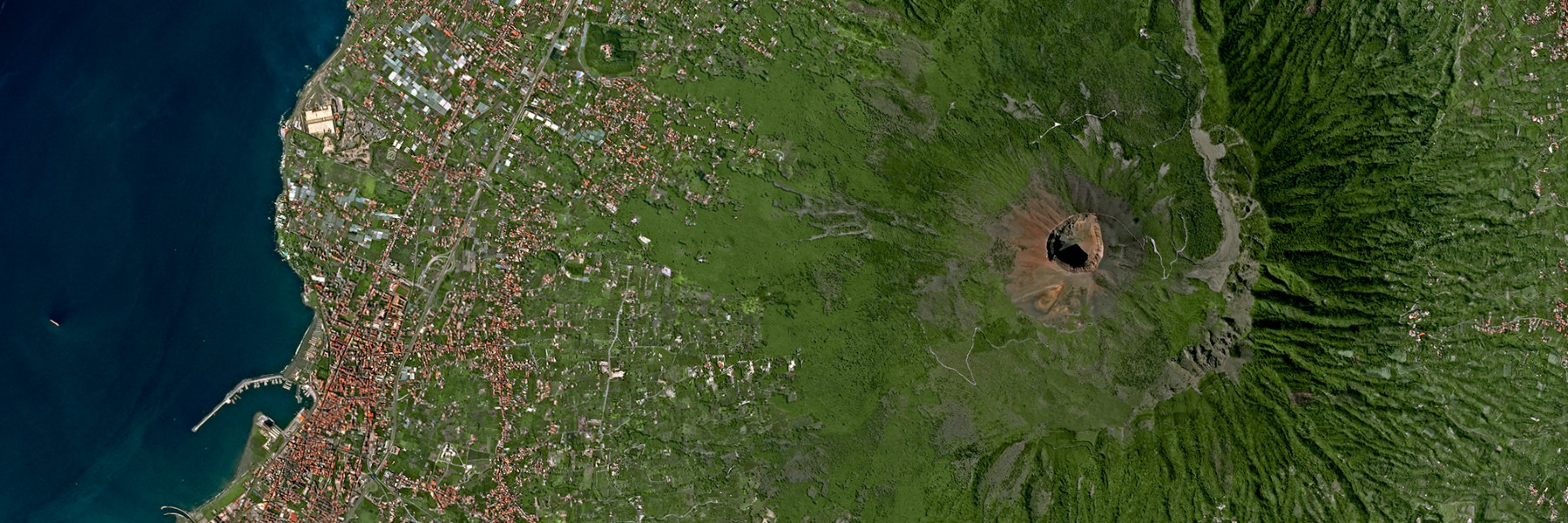Vesuvius, is a rare example of "fence volcano": the cone is surrounded by a much older crater that had a circumference of about 11 km long.

Eocene the mountain was an island surrounded by the sea, just in the Pliocene is welded to the mainland, and it is estimated that then it reached the height of 2300 m; currently the Gran cone, its top, is high in 1281 me the crater measuring about 1500 m in circumference.
On August 24, 79 AD is the date of its first eruption in historical times. We have an account of those terrible days in the letter that Pliny the Younger wrote to Tacitus.
Pompeii and Stabiae were destroyed and buried under a blanket of ash and lapilli, Herculaneum was submerged by a river of fango.Nei twelve centuries that followed the destruction of Pompeii, Vesuvius had eleven other eruptions. The eruption of 1139 was particularly violent. There was a long period of stagnation during which the volcano was covered with vegetation to the top. Vesuvius back into the business in 1631: more than 3000 people died and the smoke darkened the sky to the Gulf of Taranto for several days. Since then there were numerous eruptions, among the most important we remember those of 1694, 1767, 1794 (which destroyed Torre del Greek), 1872 and 1906. The last eruption was in 1944.
The volcano is currently in a state of rest .
The eruption of 79 AD that destroyed Pompeii and Herculaneum occurred after a long period of stagnation, to the point that the local population no longer recognized as the Vesuvius volcano in those years but as a simple mount, as can be seen in the painting of ' vintage found in Pompeii. Vesuvius belongs to that class of known volcanoes "gray volcanoes" for the type of material they make as they go into business, are the gases and ash to come out in abundance and violently forcing a stampede and often without hope, who lives in radius of tens if not hundreds of kilometers from the volcanic cone. Lavas, in this type of eruption, are of secondary importance and usually follow after days or weeks gases and lapilli. Features of these eruptions are the hot clouds: it comes to gas and various heavy materials so as not to be able to climb into the sky and therefore forced to travel the flanks of the volcano also at 150 kmh, breaking and incinerating encounter any obstacle along their path. The lighter material is able to rise to the top remaining suspended in the atmosphere so as to create an unnatural night which can last for days, then the material falls under appearance of infernal rain. Currently the Vesuvius area over a million inhabitants, an eruption could cause the deaths of hundreds of thousands. During the eruption of 1631, the natural barrier of Mount Somma, one obstacle in the way of glowing cloud higher than 250 meters, barely managed to save the northern towns of Vesuvius.


